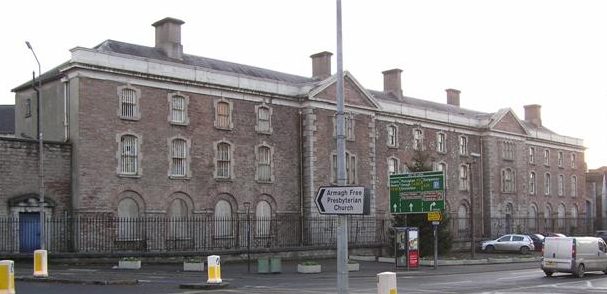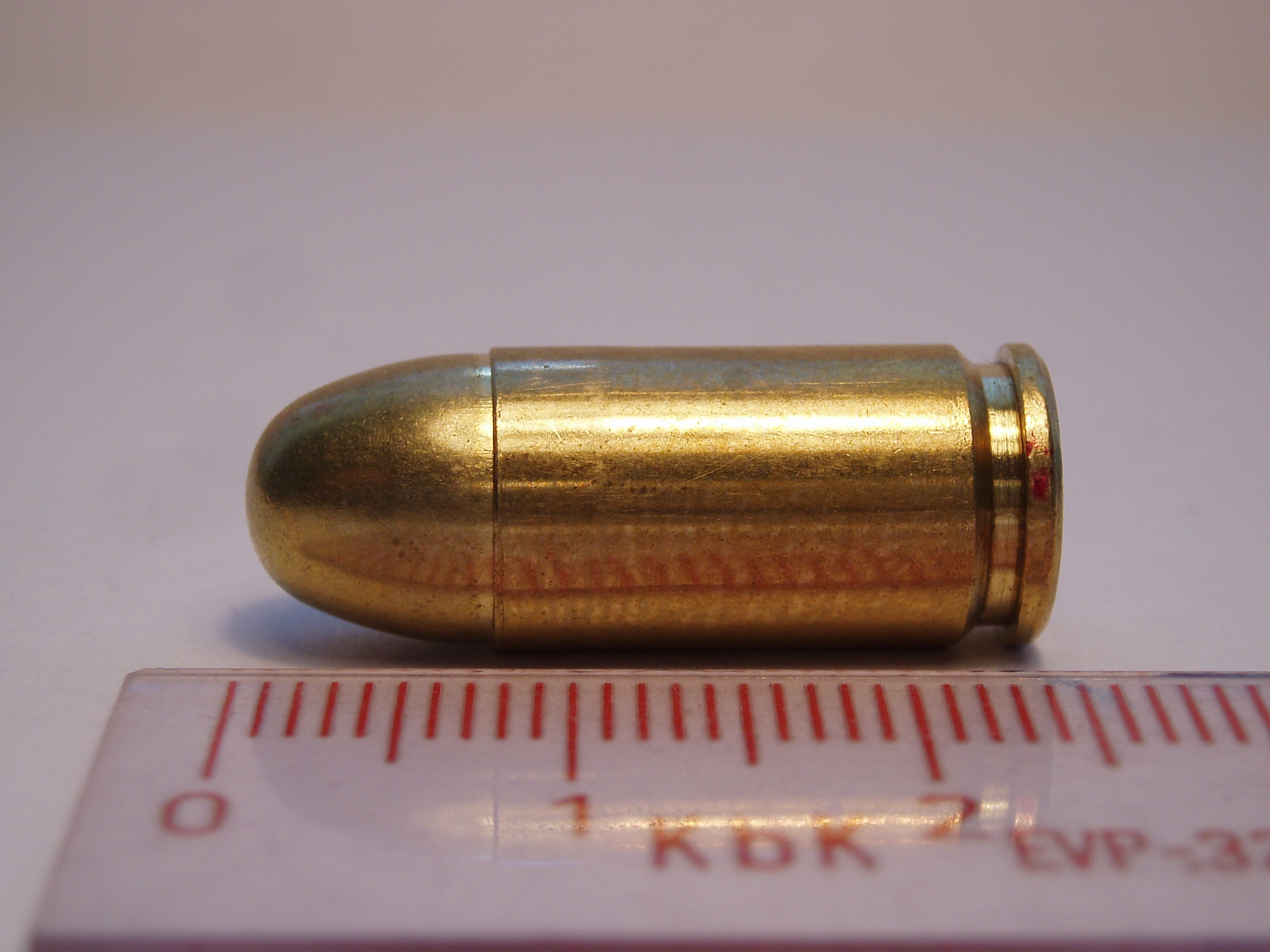|
Northern Ireland Security Guard Service
The Northern Ireland Security Guard Service (NISGS) is a civilian organisation of the Ministry of Defence that provides armed security at military establishments in Northern Ireland. It was founded in 1998 following the Good Friday Agreement and is a unionised, non-industrial civilian security guard organisation under the authority of the General Officer Commanding (Northern Ireland), who holds ultimate responsibility for the operation of the organisation. The NISGS works alongside the unarmed Ministry of Defence Guard Service (MGS). In the rest of the United Kingdom, armed security is the responsibility of the Military Provost Guard Service, made up of service personnel. Civilian security officer - Armed As a MOD Civil Servant, a NISGS Civilian Security Officer (CSO) is authorised to be armed when on duty in accordance with provisions within The Firearms (Northern Ireland) Order 2004 and the CDS Arming Directive. Massereene Barracks incident In 2009 CSOs at Massereene Barra ... [...More Info...] [...Related Items...] OR: [Wikipedia] [Google] [Baidu] |
Northern Ireland
Northern Ireland ( ; ) is a Countries of the United Kingdom, part of the United Kingdom in the north-east of the island of Ireland. It has been #Descriptions, variously described as a country, province or region. Northern Ireland shares Republic of Ireland–United Kingdom border, an open border to the south and west with the Republic of Ireland. At the 2021 United Kingdom census, 2021 census, its population was 1,903,175, making up around 3% of the Demographics of the United Kingdom#Population, UK's population and 27% of the population on the island of Ireland#Demographics, Ireland. The Northern Ireland Assembly, established by the Northern Ireland Act 1998, holds responsibility for a range of Devolution, devolved policy matters, while other areas are reserved for the Government of the United Kingdom, UK Government. The government of Northern Ireland cooperates with the government of Ireland in several areas under the terms of the Good Friday Agreement. The Republic of Ireland ... [...More Info...] [...Related Items...] OR: [Wikipedia] [Google] [Baidu] |
Police Service Of Northern Ireland
The Police Service of Northern Ireland (PSNI; ; Ulster-Scots: '), is the police service responsible for law enforcement and the prevention of crime within Northern Ireland. It is the successor to the Royal Ulster Constabulary (RUC) after it was reformed and renamed in 2001 on the recommendation of the Patten Report. The PSNI is the third largest police service in the United Kingdom in terms of officer numbers (after the Metropolitan Police and Police Scotland) and the second largest in terms of geographic area of responsibility, after Police Scotland. The PSNI is approximately half the size of Garda Síochána in terms of officer numbers. Background As part of the Good Friday Agreement, there was an agreement to introduce a new police service initially based on the body of constables of the RUC. As part of the reform, an Independent Commission on Policing for Northern Ireland (the Patten Commission) was set up, and the RUC was replaced by the PSNI on 4 November 2001. Th ... [...More Info...] [...Related Items...] OR: [Wikipedia] [Google] [Baidu] |
Law Enforcement In Ireland
This is a description of law enforcement in Northern Ireland and the Republic of Ireland. Before the Republic (then called the Irish Free State) left the union in 1922, one police force — the Royal Irish Constabulary — policed almost the whole island (aside from Dublin, where the Dublin Metropolitan Police were the main force; Belfast, where the Belfast Borough Police were the main force; and the borough of Londonderry, where the Londonderry Borough Police were the main force before merging with the RIC). The Royal Ulster Constabulary (RUC), renamed the Police Service of Northern Ireland (PSNI) in 2001, is the direct descendants of that force, while a new police force — the Garda Síochána — was set up in the Irish Free State (Republic of Ireland since 1949). Today, due to the sharing of a land border and legislation introduced to both countries after the Belfast Agreement of 1998, there is cooperation between the main police forces of jurisdictions. Republic of Ireland ... [...More Info...] [...Related Items...] OR: [Wikipedia] [Google] [Baidu] |
Northern Ireland Prison Service
The Northern Ireland Prison Service is the agency charged with managing prisons in Northern Ireland. It is an executive agency of the Department of Justice (Northern Ireland), Department of Justice, the headquarters of which are in Castle Buildings in the Stormont Estate in Belfast. The service's stated aim is "to improve public safety by reducing the risk of re-offending through the management and rehabilitation of offenders in custody". It is distinct from His Majesty's Prison Service, which manages most prisons in England and Wales, and the Scottish Prison Service, which manages most prisons in Scotland. Background The Prison Service is responsible for providing prison services in Northern Ireland. Its main statutory duties are set out in the Prison Act (Northern Ireland) 1953 (c. 18 (N.I.)) and rules made under the act. Prior to partition, prisons in Ireland (1801–1921), Ireland were administered by the Prison Board of Ireland. After the Government of Ireland Act ... [...More Info...] [...Related Items...] OR: [Wikipedia] [Google] [Baidu] |
Germany Guard Service
The Germany Guard Service (GGS) is a British Ministry of Defence security organisation that provides armed security to the British Armed Forces in Germany. It was organised under agreements between the UK and German authorities, with the origins of the organisation dating as far back as the 1950s in the North Rhine-Westphalia and Lower Saxony areas. The GGS directly supports the British Forces Germany garrison security mission. History British Forces Germany (BFG) is the name for British Armed Forces service personnel and civilians based in Germany. It was first established following the Second World War as the British Army of the Rhine (BAOR). Although much smaller than the BAOR, it is still the largest concentration of British armed forces permanently stationed outside the United Kingdom. With the end of the Cold War and the Options for Change defence review in the early 1990s, BFG has been considerably reduced. Since the 1990s, the British presence has centred on the 1st ... [...More Info...] [...Related Items...] OR: [Wikipedia] [Google] [Baidu] |
Ministry Of Defence Police
The Ministry of Defence Police (MDP) is a civilian special police force#United Kingdom, special police force which is part of the United Kingdom's Ministry of Defence (United Kingdom), Ministry of Defence. The MDP's primary responsibilities are to provide armed security and counter terrorism services to designated high-risk areas, as well as uniformed policing and limited investigative services to Ministry of Defence property, personnel, and installations throughout the United Kingdom. The MDP are not military police. Service personnel often refer to the MDP by the nickname "MOD plod". The force was formed in 1971 by the merger of three separate service constabularies: the Air Force Department Constabulary, the Army Department Constabulary, and the Admiralty Constabulary. The force, which consists of two divisions, is headquartered at RAF Wyton, Cambridgeshire. The MDP underwent a significant restructuring as part of the coalition government's post-2010 austerity measures, and ... [...More Info...] [...Related Items...] OR: [Wikipedia] [Google] [Baidu] |
9mm Parabellum
This is a list of firearm cartridges that have bullets in the to caliber range. *''Case length'' refers to the round case Case or CASE may refer to: Instances * Instantiation (other), a realization of a concept, theme, or design * Special case, an instance that differs in a certain way from others of the type Containers * Case (goods), a package of relate ... length. *''OAL'' refers to the overall length of the loaded round. All measurements are given in millimeters, followed by the equivalent in inches between parentheses. *Ammunition or cartridge specification is usually the "cartridge maximum" specification and may not be the same as the nominally measured dimensions of production, remanufactured, or hand-loaded ammunition. * SAAMI and the CIP publish cartridge data. Pistol cartridges Revolver cartridges Rifle cartridges See also * .38 caliber * 9mm Major References {{Firearm cartridge calibers Pistol and rifle cartridges de:9 mm ... [...More Info...] [...Related Items...] OR: [Wikipedia] [Google] [Baidu] |
Submachine Gun
A submachine gun (SMG) is a magazine (firearms), magazine-fed automatic firearm, automatic carbine designed to fire handgun cartridges. The term "submachine gun" was coined by John T. Thompson, the inventor of the Thompson submachine gun, to describe its design concept as an automatic firearm with notably less firepower than a machine gun (hence the prefix "wikt:sub-, sub-"). As a machine gun must fire rifle cartridges to be classified as such, submachine guns are not considered machine guns. The submachine gun was developed during World War I (1914–1918) as a Close-quarters battle, close quarter offensive weapon, mainly for trench raiding. At its peak during World War II (1939–1945), millions of submachine guns were made for shock troops, assault troops and auxiliaries whose military doctrine, doctrines emphasized close-quarters combat, close-quarter suppressive fire. New submachine gun designs appeared frequently during the Cold War,Military Small Arms Of The 20th Century. Ian ... [...More Info...] [...Related Items...] OR: [Wikipedia] [Google] [Baidu] |
Heckler & Koch MP5
The Heckler & Koch MP5 (, ) is a submachine gun developed in the 1960s by German firearms manufacturer Heckler & Koch. It uses a similar modular design to the Heckler & Koch G3, and has over 100 variants and clones, including selective fire, Semi-automatic firearm, semi-automatic, Silencer (firearms), suppressed, Carbine, compact, and even Designated marksman rifle, marksman variants.Hogg, Ian (2002). ''Jane's Guns Recognition Guide''. Jane's Information Group. . The MP5 is one of the most widely used submachine guns in the world, having been adopted by over forty nations and numerous militaries, police forces, intelligence agencies, Security company, security organizations, paramilitaries, and non-state actors. Attempts at replacing the MP5 by Heckler & Koch began in the 1980s, but despite functional prototype weapons having promising performance, a formal successor did not enter commercial production until 1999, when Heckler & Koch developed the Heckler & Koch UMP, UMP. Howeve ... [...More Info...] [...Related Items...] OR: [Wikipedia] [Google] [Baidu] |
Selective Fire
Selective may refer to: * Selective school, a school that admits students on the basis of some sort of selection criteria ** Selective school (New South Wales) See also * Selective breeding Selective breeding (also called artificial selection) is the process by which humans use animal breeding and plant breeding to selectively develop particular phenotypic traits (characteristics) by choosing which typically animal or plant m ..., the process of breeding for specific traits * Selection (other) * Selectivity (other) * * {{disambig ... [...More Info...] [...Related Items...] OR: [Wikipedia] [Google] [Baidu] |
L85A2
The SA80 (Small Arms for the 1980s) is a British family of 5.56×45mm NATO service weapons used by the British Army. The L85 Rifle variant has been the standard issue service rifle of the British Armed Forces since 1987, replacing the L1A1 Self-Loading Rifle. The prototypes were created in 1976, with production of the A1 variant starting in 1985 and ending in 1994. The A2 variant came to be as the result of a significant upgrade in the early 2000s by Heckler & Koch and remains in service as of 2025. The A3 variant was first issued in 2018 with several new improvements. The remainder of the SA80 family consists of the L86 Light Support Weapon, the short-barrelled L22 Carbine and the L98 Cadet rifle. The SA80 was the last in a long line of British weapons (including the Lee–Enfield family) to come from the Royal Small Arms Factory, the national arms development and production facility at Enfield Lock, before its weapons factory was closed down in 1988. Development Post-war ... [...More Info...] [...Related Items...] OR: [Wikipedia] [Google] [Baidu] |





